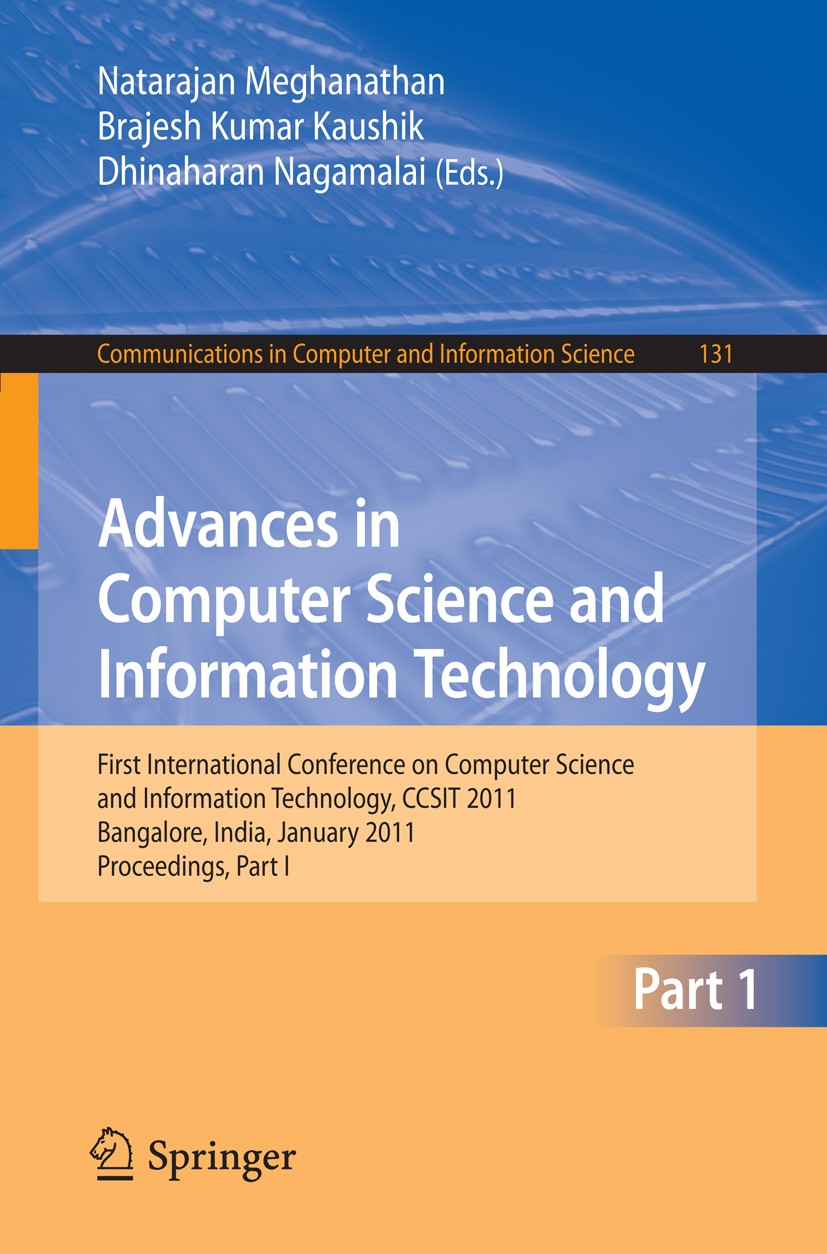| 期刊全称 | Advances in Computer Science and Information Technology | | 期刊简称 | First International | | 影响因子2023 | Natarajan Meghanathan,Brajesh Kumar Kaushik,Dhinah | | 视频video | http://file.papertrans.cn/148/147237/147237.mp4 | | 发行地址 | Fast-track conference proceedings.State-of-the-art research.Up-to-date results | | 学科分类 | Communications in Computer and Information Science | | 图书封面 |  | | 影响因子 | This volume constitutes the first of three parts of the refereed proceedings of the First International Conference on Computer Science and Information Technology, CCSIT 2010, held in Bangalore, India, in January 2011.The 59 revised full papers presented in this volume were carefully reviewed and selected. The papers are organized in topical sections on distributed and parallel systems and algorithms; DSP, image processing, pattern recognition, and multimedia; software engineering; database and data Mining; as well as soft computing, such as AI, neural networks, fuzzy systems, etc. | | Pindex | Conference proceedings 2011 |
The information of publication is updating

|
|
 |Archiver|手机版|小黑屋|
派博传思国际
( 京公网安备110108008328)
GMT+8, 2025-11-17 01:53
|Archiver|手机版|小黑屋|
派博传思国际
( 京公网安备110108008328)
GMT+8, 2025-11-17 01:53


